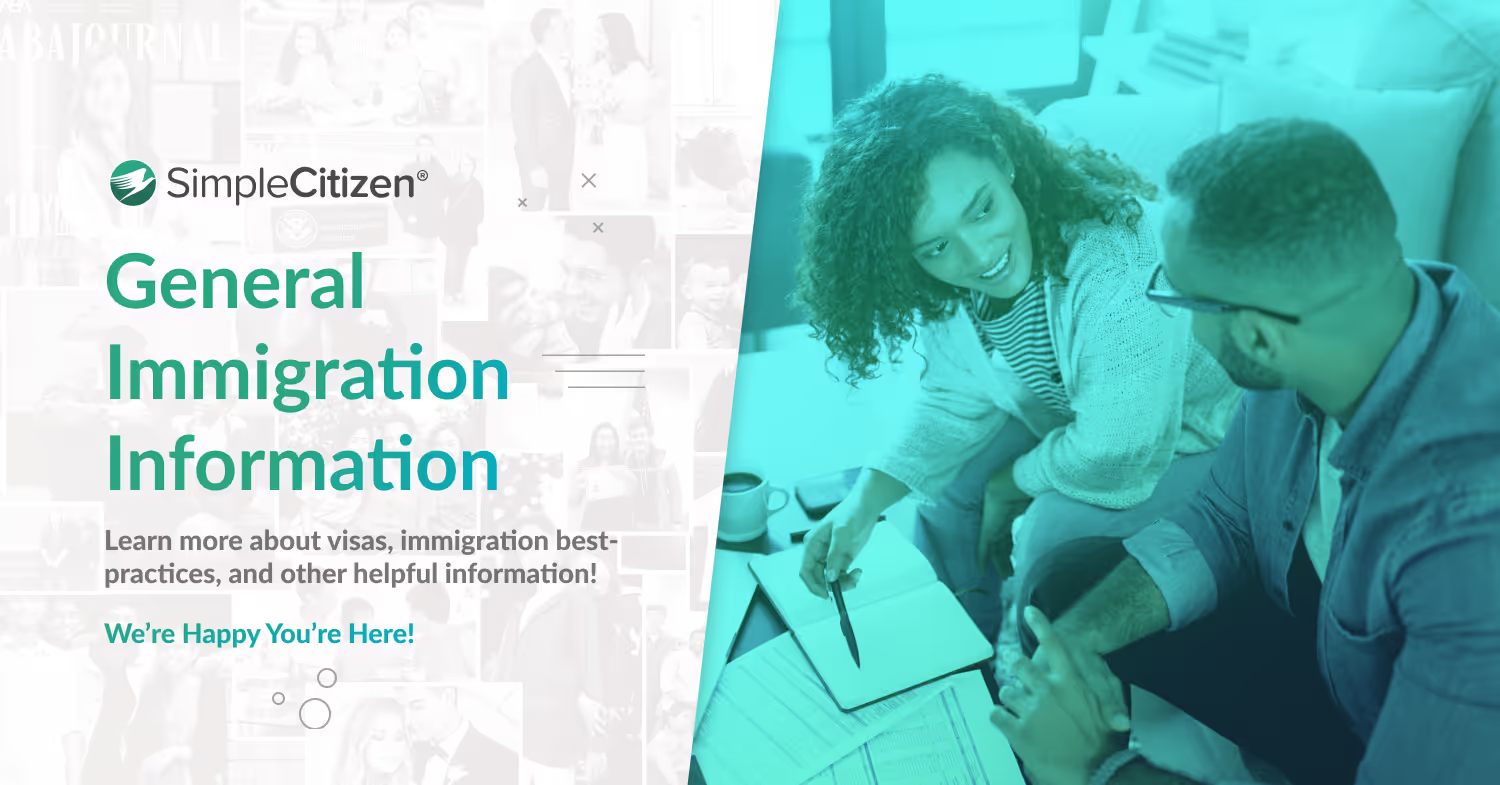The Ultimate H-1B Visa Guide: How to Hire International Employees
Last Updated: March 11, 2021
Human resources professionals must understand the hiring needs of their organization and how to recruit and retain qualified workers. For many companies, this means hiring foreign nationals. Recent headlines have focused on one of the most common types of work visas: H-1B. More than 460,000 H-1B visas — nonimmigrant visas for specialty occupations — were granted in 2013, the Economic Policy Institute reports. According to the 2017 Forbes survey, there was a 21% year-over-year increase of companies that said they would sponsor workers from overseas. This increasing work visa demand juxtaposed with tightening regulations on immigration has created a more intense environment for attracting and keeping foreign talent. It is more important than ever for companies to understand how to navigate the current immigration landscape in order to hire the best resources and help their companies maintain a competitive advantage.
This guide walks human resources professionals through how to successfully hire foreign nationals.
Step 1: Petition USCIS for a Nonimmigrant Visa
There are many different types of nonimmigrant visas. Some of the most common work visas are H-1B, TN, L-1A, L-1B, E-3, and O-1. This article will focus on H-1B.
What is the H-1B Visa?
The H-1B visa is a nonimmigrant, employment-based visa that U.S. companies can use to hire employees in specialty fields that require theoretical or technical expertise, such as computer science, finance, math, engineering, health care and architecture. U.S. immigration law requires that the visa holder have a bachelor’s-level education or higher. If the applicant doesn't have at least bachelor’s degree, in some cases they may be able to show degree equivalence through work experience or other qualifications.
What is H-1B season?
Every year, the deadline for filing an H-1B is April 1, and the earliest possible date a foreign worker could start employment is October 1. H-1B "season" is the time of year leading up to the April 1 deadline when employers are preparing their H-1B visa petitions. Most companies start this process in January or early February.
What is the H-1B cap?
USCIS limits the number of H-1B visas that are granted each year. Current limits are as follows:
- Regular H-1B visas: 65,000.
- H-1B visas for people with a U.S. master's degree or higher: 20,000
If USCIS receives more than 65,000 regular petitions and 20,000 advanced degree petitions during the first five business days after April 1, they use a lottery system to randomly select petitions to be granted. If an employee’s petition is not selected, USCIS will notify you and return the filing fees.
Are there exemptions to the H-1B cap?
Yes, there are. The following types of employers are not subject to the annual H-1B visa petition limits:
- Colleges and Universities.
- Nonprofits that are part of or associated with a college or university (such as a hospital associated with a university).
- Nonprofit research organizations and governmental research organizations; and
- Employees whose H-1Bs have already been counted against the annual H-1B cap (includes employees transferring their H-1B from one employer to another, as well as those filing for an H-1B extension).
It should also be noted that 6,800 of the 65,000 H-1B visas are reserved for Chilean and Singaporean nationals (known as H-1B1 visas).
H-1B Visa Eligibility Requirements

The position being offered must meet one of the following criteria:
- Bachelor's or higher degree or its equivalent is normally the minimum entry requirement for the position;
- The degree requirement for the job is common to the industry or the job is so complex.
- The employer normally requires a degree or its equivalent for the position; or
- The nature of the specific duties is so specialized and complex that the knowledge required to perform the duties is usually associated with the attainment of a bachelor’s or higher degree.
The person you wish to hire must also meet one of the following criteria:
- Completion of a U.S. bachelor's degree or higher required for the specific occupation from an accredited college or university.
- Completion of a foreign degree that is the equivalent to a U.S. bachelor's degree in the specialty occupation (requires academic equivalency evaluation).
- Have an unrestricted state license, registration, or certification which authorizes the employee to fully practice the specialty occupation and be engaged in that specialty in the state of intended employment; or
- Completed education, training, or progressively responsible experience in the specialty that is equivalent to the completion of such a degree, and have recognition of expertise in the specialty through progressively responsible positions directly related to the specialty occupation.
Are there filing fees associated with the H-1B?
There are a number of filing fees that you, as the petitioning employer, are required to pay:
- Base filing fee: $460 (no exemptions)
- Fraud prevention and detection fee: $500 (no exemptions)
- Employer sponsorship fee: $1,500 for employers with more than 25 full-time employees; $750 for employers with fewer than 25 full-time employees. This fee may be waived under certain circumstances.
- Public Law 114-113 fee: $4,000. This fee is required if the employer has more than 50 employees AND more than 50 percent of employees are on H-1B or L-1 status. This fee may also be waived under certain circumstances.
How long is the H-1B Visa good for?
An H-1B visa is granted for three years and may be renewed for another three years, for a maximum of six years — minus any documented time spent outside of the U.S. This time may be “recaptured" and added to the end of the 6-year period.
The H-1B visa cannot be renewed at the end of the six-year period unless certain steps have been taken toward the filing of a permanent resident (green card) application.
Human Resources Checklist
- Review the background of the potential hire to ensure they meet the specialty/degree requirements.
- Review the recruitment and selection process to ensure the sponsorship criteria are met.
- Review the rate of pay for the position, ensuring it is the prevailing wage for the position and geographical area.
- Collect and submit the following (in duplicate):
- The certified labor application from the Department of Labor (form ETA 9035)
- Letter on company letterhead and signed by the company representative describing the nature of the U.S. job opportunity, including the job description.
- Support letter confirming the job offer to the foreign worker and explaining the terms and conditions of the offered employment.
- Form G-28, if an attorney or accredited representative is being used.
- Form I-129, two copies with original signatures on both.
- H-1B Supplement to Form I-129.
- H-1B Data Collection pages.
- Visa history (two originals)
- Resume
- Clear copy of unexpired passport
- Clear copy of Form I-94
- Clear copy of transcripts, diplomas, and degrees; if necessary, include a U.S. academic equivalency evaluation.
- Required government filing fees.
Prepare to maintain a public access file
Finally, it is the employer's responsibility to maintain a public access file on each H-1B employee, and this file must be made available to the public upon request. Each file must contain:
- A signed copy of the certified labor condition application (LCA) from the Department of Labor.
- A statement of explanation outlining how the employer set the employee's salary.
- Documentation of the appropriate prevailing wage for the position and geographical area.
- Notice that the certified LCA has been posted at the company.
Note: Do not included the employee's personnel file in the public access file. The personnel file should be kept separately.
Step 2: Start Permanent Residency for Your Employee
Most companies start the permanent residency (green card) process for their employees after 6 – 12 months of employment. The permanent residency process is expensive, often costing between $10,000 and $20,000. However, because most nonimmigrant visas have strict time limits, companies that hire foreign talent can only keep those employees long term if they sponsor them for a green card.
For most professional employees, the first step in the permanent residency process is PERM Labor Certification. This step is very complex in terms of timing and requirements. The Department of Labor is very strict with PERM cases, and there are seemingly innumerable missteps that can result in a denial. Denials are very frustrating to employees who want their green cards as soon as possible and look very disapprovingly on any delay. Because PERM Labor Certification is so expensive, denials are also very costly to the company.
What does the PERM Labor Certification process look like?
The DOL is primarily looking for two things:
- Evidence that there are not enough qualified U.S. workers to fill the position being offered; and
- Hiring a foreign worker will not hurt the wages and working conditions of similarly employed U.S. workers.
As the employer, you'll be asked to prove:
- That you've performed an extensive and unsuccessful hiring search among U.S. workers. This includes notifying the U.S. workforce at your company; and
- That the salary you're offering either equals or exceeds the "prevailing wage" for the position in that geographical area.
How is "prevailing wage" determined?
The Department of Labor provides for the prevailing wage for each position sponsored under PERM Labor Certification. Most prevailing wages are determined through a request to the Office of Foreign Labor Certification. In some instances, employers may use a relevant salary survey to “challenge” the Department of Labor’s prevailing wage assessment and thereby secure a lower prevailing wage.
Is there a filing fee to apply for PERM Labor Certification?
There is no government filing fee for PERM Labor Certification, however, the mandatory recruitment includes two Sunday newspaper ads. These ads must be placed in a newspaper of general circulation in the geographic area where the position is located, and these ads can be very expensive – sometimes costing $2,000 - $3,000. Most companies also hire an attorney to complete this process, and the legal fees typically cost several thousand dollars.
What Comes Next?
PERM Labor Certification typically takes about 9 – 12 months from start to finish. The company must then file the Form I-140 and Form I-485 for the employee. Depending on several factors, including the employee’s country of origin, the rest of the permanent residency process can take anywhere from 1 – 12 years – sometimes longer. During that time, visa employees should maintain a nonimmigrant visa status until they are able to get an EAD work card as part of their I-485 process.
Related
General Immigration Information
Articles
Begin Your Immigration Journey Today with SimpleCitizen!
Why spend more time and money on countless legal headaches, when you could just use SimpleCitizen and focus on what matters most – being with those you love! Find new opportunities, start new adventures, and bring your family together with SimpleCitizen today!

